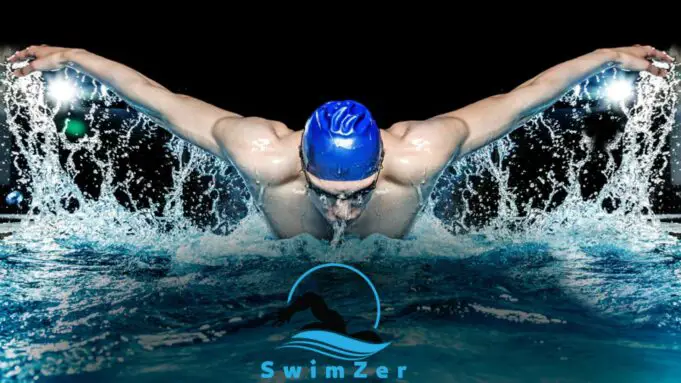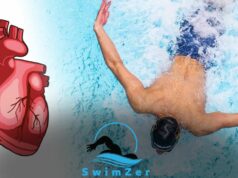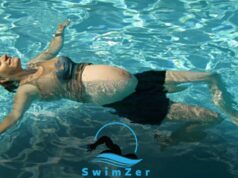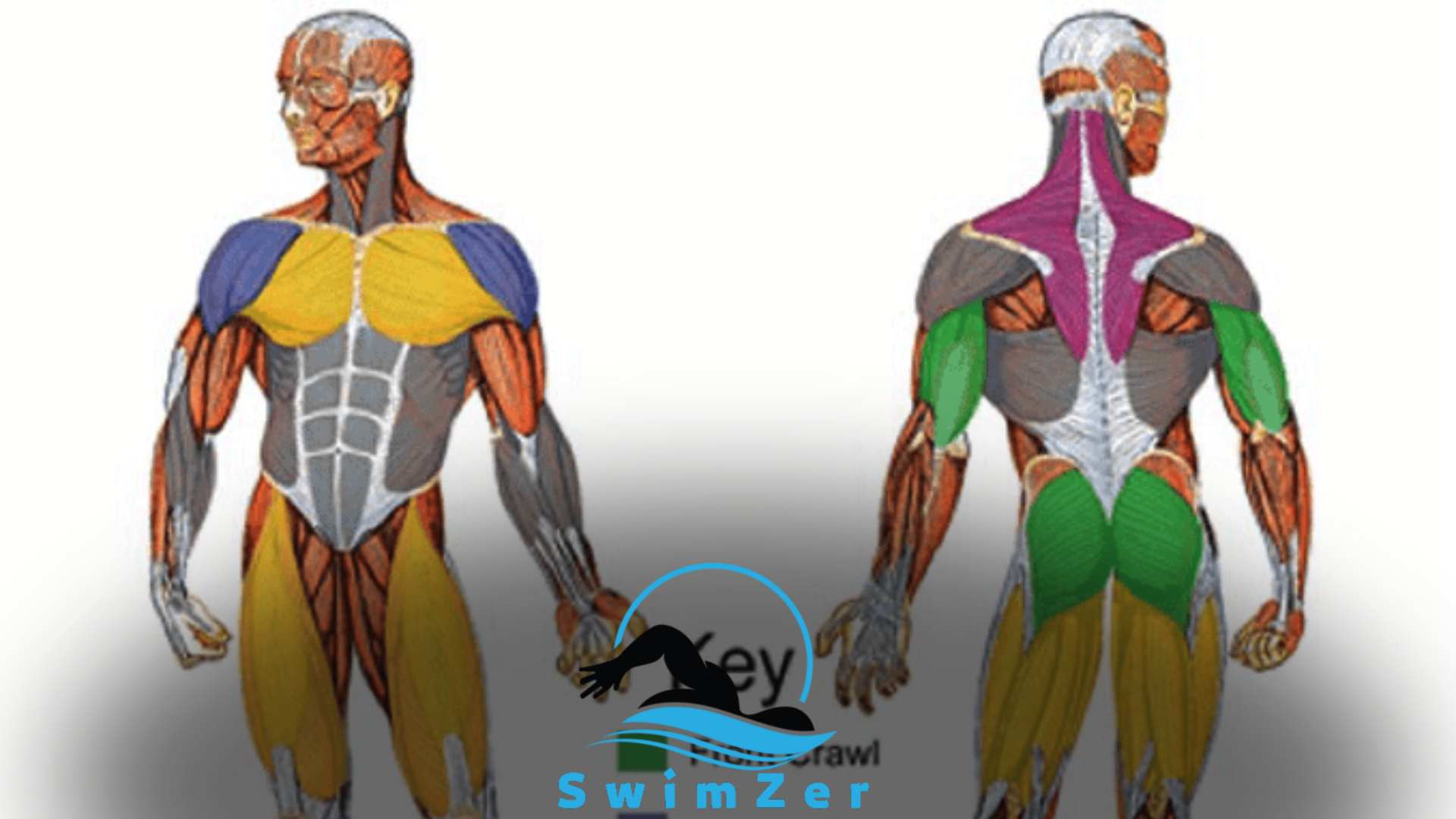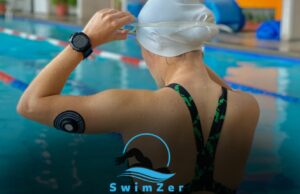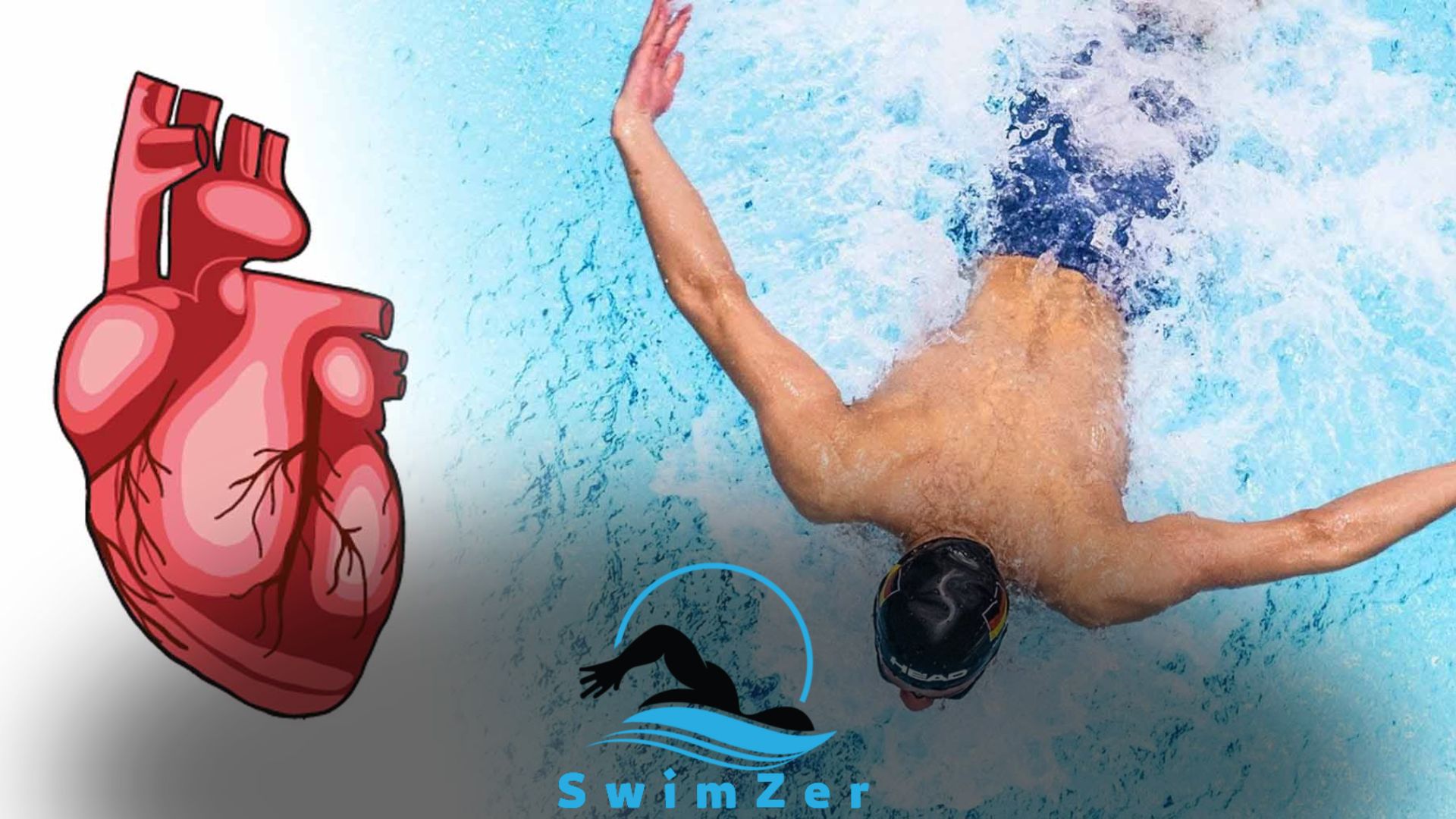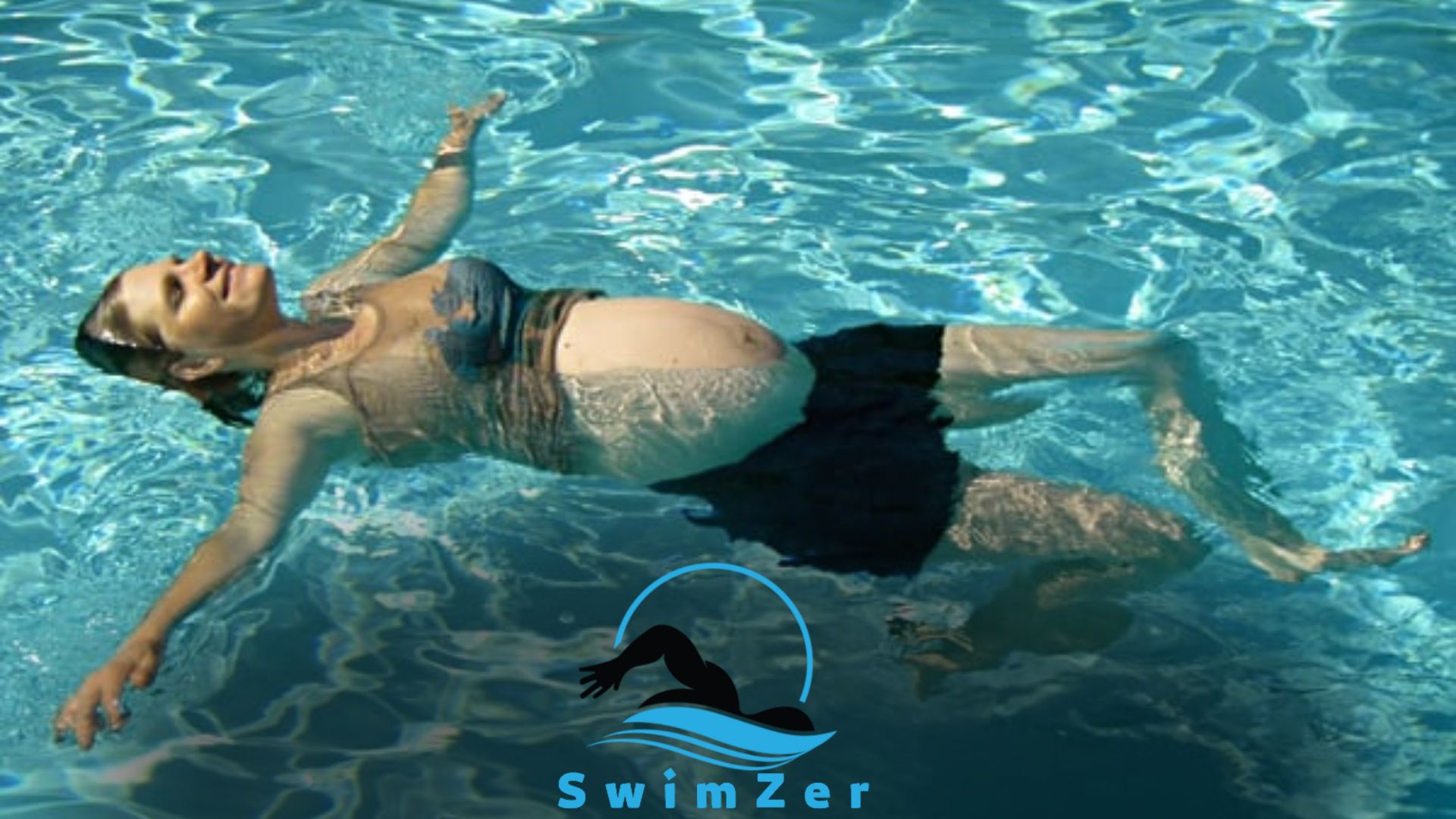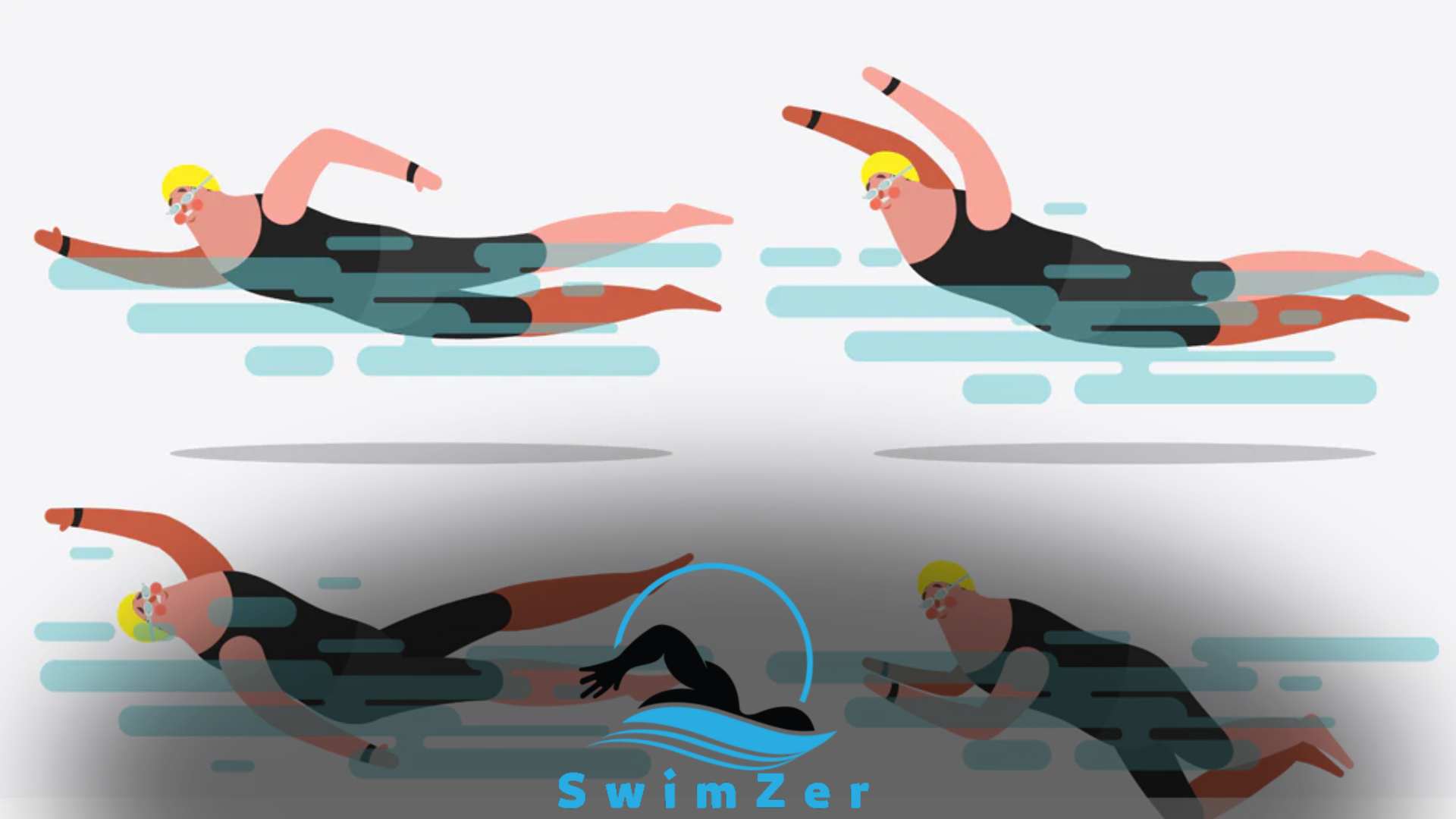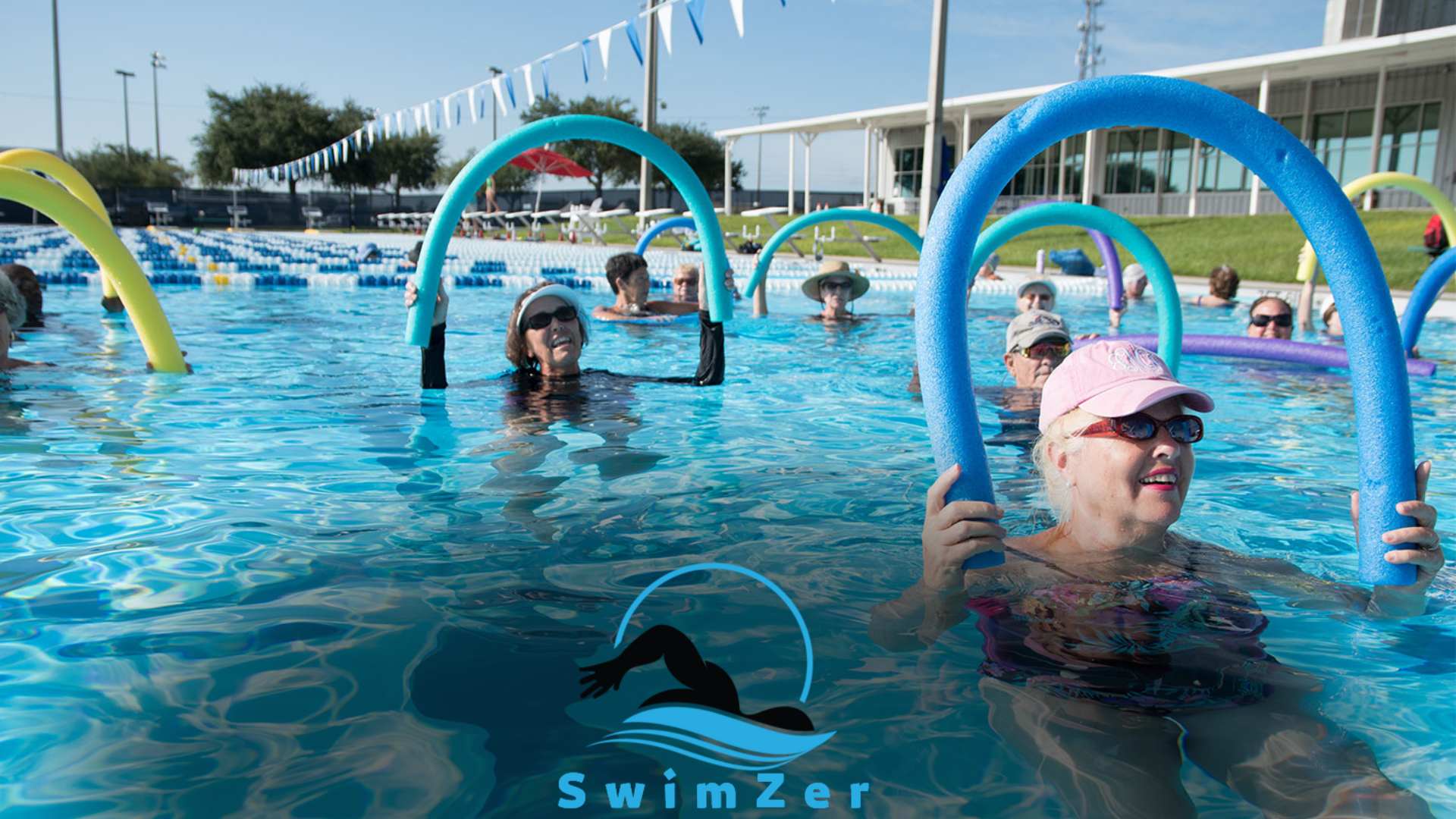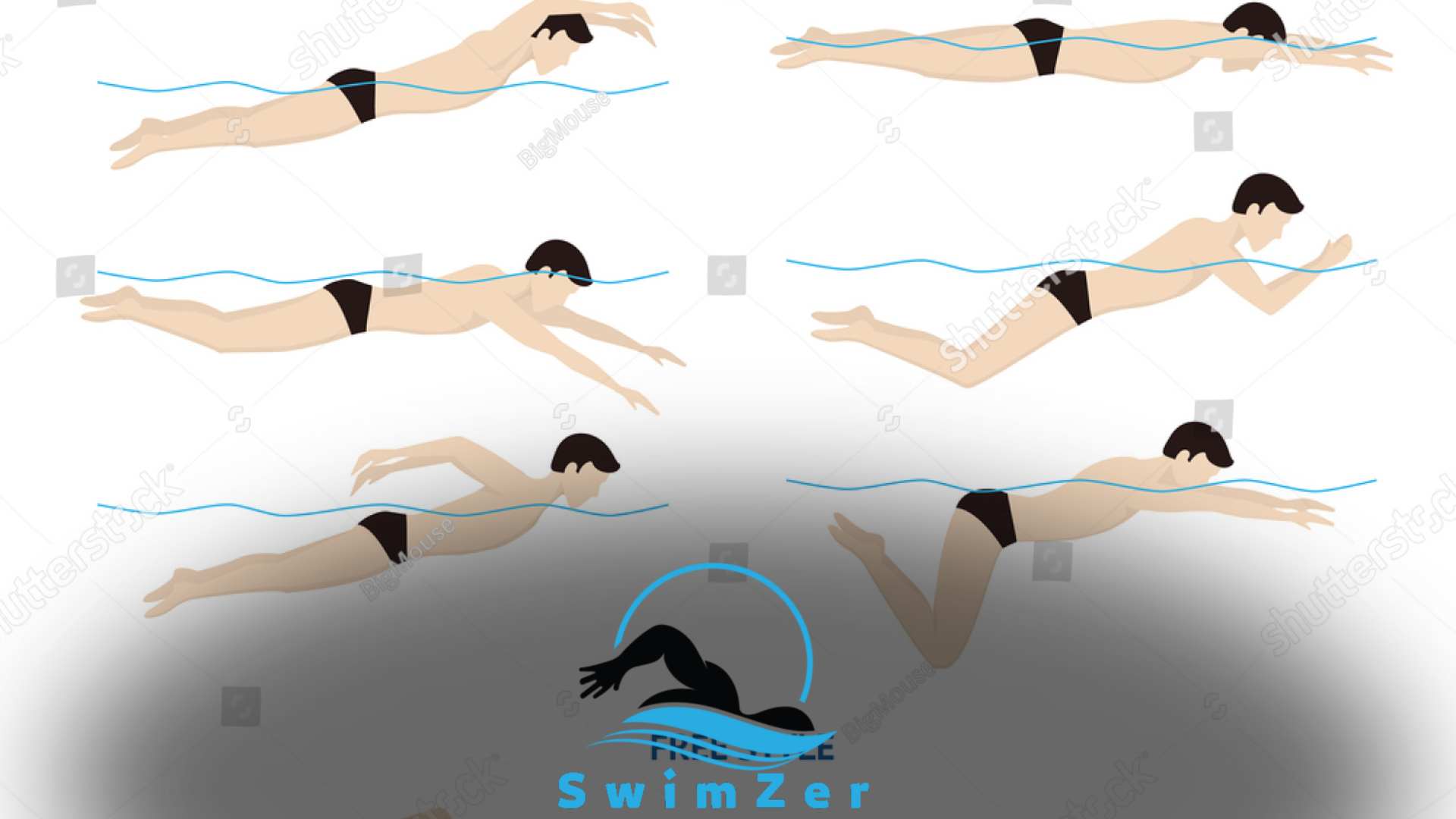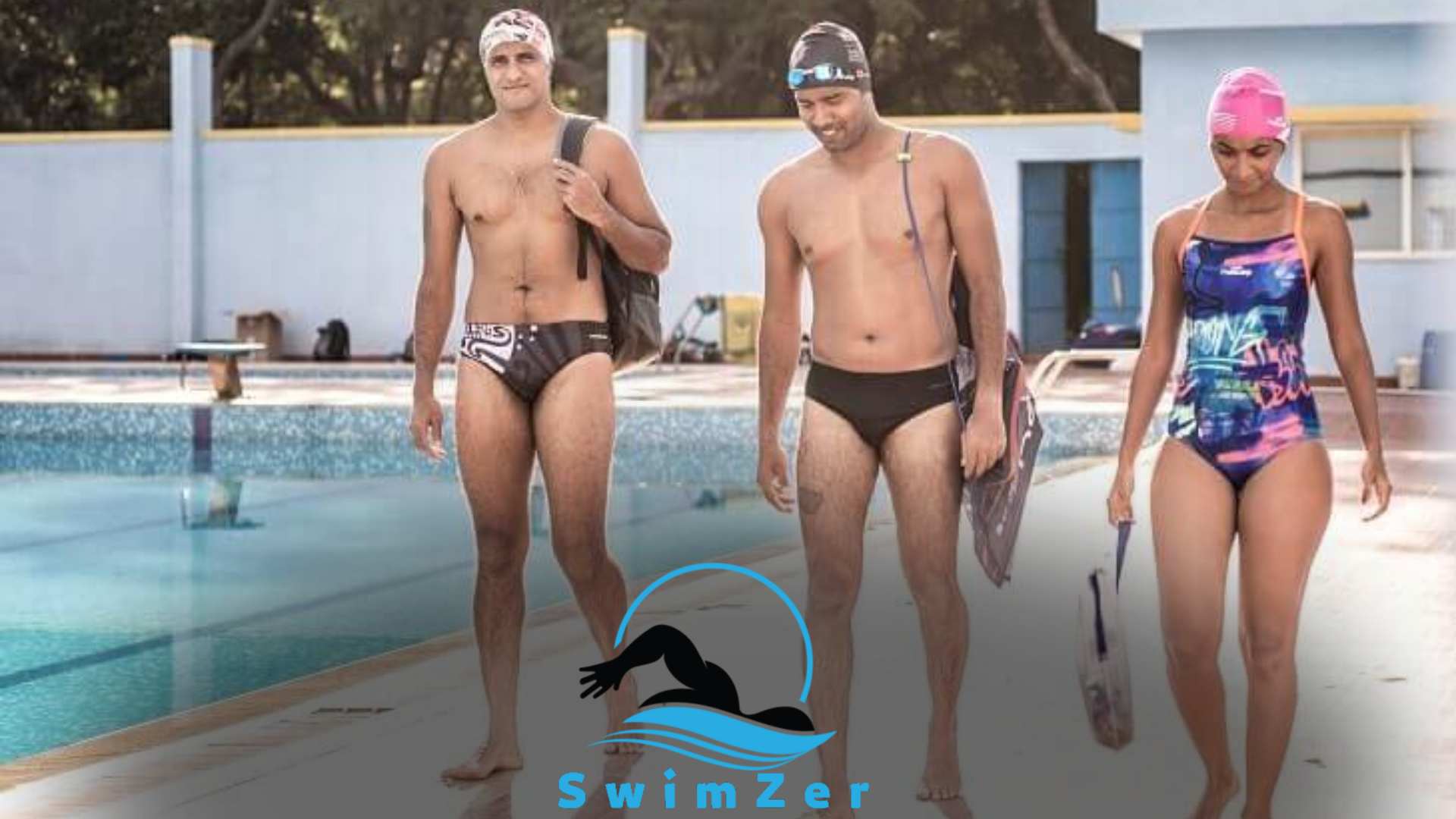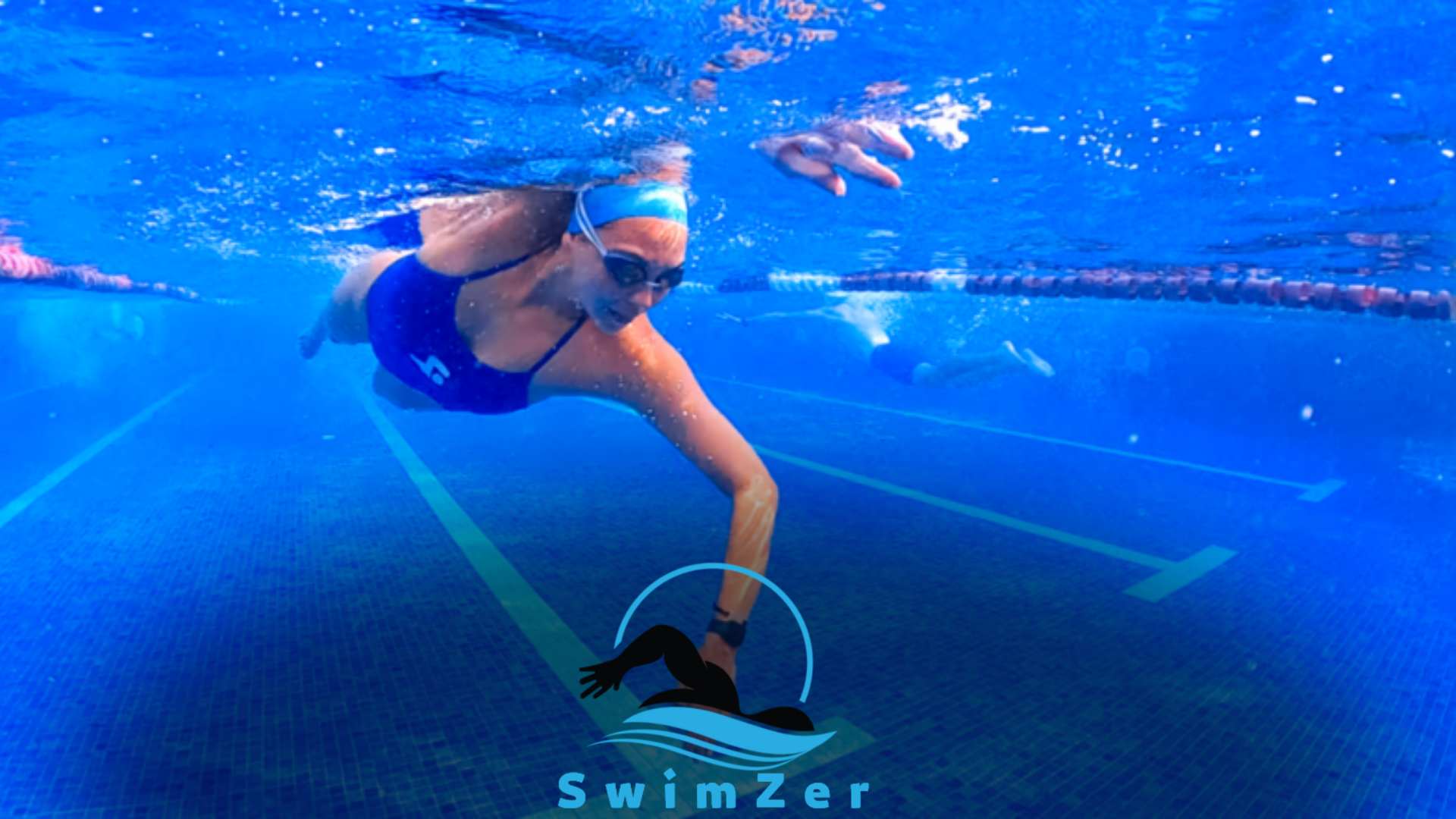Swimming primarily builds the muscles in the upper body and core. The full-body workout engages the arms, shoulders, back, chest, and abdominal muscles.
Swimming can also strengthen the lower body muscles, such as the legs and glutes, depending on the stroke and intensity of the swim.
Regular swimming can help enhance muscle tone, strength, endurance, and overall fitness.
Whether a beginner or a professional athlete, swimming offers a low-impact exercise that allows you to work multiple muscle groups simultaneously, making it an effective and efficient way to build and tone muscles.
So, jump in the pool and start reaping the benefits of swimming on your muscles and overall physical well-being.
Swimming As a Muscle Builder
Swimming is not only a great cardiovascular workout, but it is also an effective and efficient way to build muscle.
When it comes to overall muscle development, swimming offers a unique and challenging experience that targets several muscle groups throughout the body.
Comparing swimming with other forms of exercise reveals its ability to strengthen muscles from head to toe.
Importance of Swimming for Overall Muscle Development
Swimming engages a variety of muscles, making it a comprehensive muscle-building exercise.
Unlike traditional weightlifting exercises that may focus on specific muscle groups, swimming utilizes both the upper and lower body muscles simultaneously.
This synergistic movement promotes an evenly toned physique and improves overall strength. Here are some of the major muscle groups that swimming targets:
- Upper body muscles: Swimming strokes such as freestyle, backstroke, and butterfly heavily engage the muscles in the arms, shoulders, and upper back. These repetitive arm and shoulder movements create resistance in the water, effectively building and toning these muscle groups.
- Core muscles: The core muscles are crucial in maintaining stability and balance while swimming. The twisting and rotating movements involved in different swimming strokes activate the abdominal muscles, obliques, and lower back muscles. This not only helps to improve posture but also strengthens the core muscles.
- Leg muscles: Kicking is an essential swimming component, primarily targeting the leg muscles. The quadriceps, hamstrings, glutes, and calf muscles are engaged when kicking against the resistance of the water. Regular swimming can contribute to stronger and more defined leg muscles.
Furthermore, swimming promotes cardiovascular endurance and improves lung capacity, which is important for building and maintaining muscle mass.
The continuous effort and resistance provided by the water increase the overall intensity of the workout, helping to burn calories and build lean muscle.
Comparing Swimming With Other Forms of Exercise
Compared to other forms of exercise, swimming is a low-impact yet highly effective muscle builder.
Unlike activities like weightlifting or running, swimming puts less stress on the joints, making it a suitable option for individuals with joint pain or injuries.
It provides a full-body workout without the risk of impact-related injuries.
Additionally, swimming engages multiple muscle groups simultaneously, making it a time-efficient exercise.
While traditional weightlifting exercises may require a separate workout for each muscle group, swimming simultaneously incorporates upper body, core, and leg muscles.
This makes swimming an efficient choice for individuals aiming to maximize their workout within a limited timeframe.
Key Muscle Groups Targeted
Swimming is a highly effective full-body workout that engages numerous muscle groups, helping you to build strength, stamina, and endurance.
Whether you’re swimming leisurely or training for a competition, the repetitive strokes and resistance of the water work wonders on your muscles.
Let’s dive in and explore the key muscle groups targeted during swimming.
Upper Body Muscle Engagement in Swimming
When it comes to engaging your upper body muscles, swimming is unparalleled. Every stroke you take propels your arms through the water, providing resistance that targets and tones various muscle groups.
Here are the main upper body muscles worked during swimming:
- Deltoids: These muscles, located in your shoulders, play a crucial role in the movement of your arms during swimming strokes.
- Latissimus Dorsi: The “lats” muscles are the broad muscles in your middle and lower back, responsible for the major pulling motion during strokes like freestyle and backstroke.
- Pectorals: Located in your chest, the pecs assist in the forward movement and stabilization of your arms while swimming the breaststroke and butterfly.
- Biceps and Triceps: These muscles, located in your upper arm, work together to power your arm movements during strokes, such as the freestyle and butterfly.
Lower Body Muscles Worked During Different Strokes
While swimming predominantly engages the upper body, it’s essential not to overlook the lower body’s role in generating power and maintaining proper body position. The different strokes target various lower body muscles:
| Swimming Stroke | Main Targeted Lower Body Muscles |
|---|---|
| Freestyle/Crawl | Quadriceps, Hamstrings, Glutes |
| Backstroke | Hamstrings, Glutes, Calves |
| Breaststroke | Adductors, Quadriceps, Glutes, Calves |
| Butterfly | Quadriceps, Glutes, Calves |
Core Strengthening While Swimming
In addition to the significant upper and lower body engagement, swimming also provides an excellent opportunity to strengthen your core muscles.
The constant stabilization required to maintain proper body position in the water engages the core muscles throughout your swim. The key core muscles targeted during swimming include:
- Rectus Abdominis (Abs): Located in the front of your abdomen, these muscles stabilize and support your body while swimming.
- Obliques: These muscles, positioned at the sides of your abdominals, assist in rotational movements and contribute to the overall stability of your body.
- Erector Spinae: Situated in your lower back, they help maintain proper spinal alignment and stability during swimming.
As you can see, swimming offers a balanced and comprehensive workout that engages various muscle groups throughout your body.
Make sure to incorporate different strokes into your swimming routine to target different muscles and achieve optimal overall strength and fitness.
Anatomy of a Swimmer’s Physique
When building a strong and toned physique, swimming is one of the best exercises you can do. Not only does it provide a full-body workout, but it also targets specific muscles that contribute to the classic “swimmer’s physique”.
In this article, we will explore the anatomy of a swimmer’s physique, identify the specific muscles developed through swimming, and discuss the role of endurance and strength in muscle tone.
Identifying Specific Muscles Developed Through Swimming
Swimming is a highly effective exercise for strengthening and toning various muscle groups in the body. Below are the specific muscles that are developed through regular swimming:
| Muscle Group | Roles |
|---|---|
| Shoulders (Deltoids) | Shoulders are highly engaged in swimming strokes, such as freestyle, butterfly, and backstroke. These movements strengthen the deltoids, giving swimmers strong and sculpted shoulders. |
| Back (Latissimus Dorsi) | Swimming requires constant engagement of the back muscles, particularly the latissimus dorsi. These muscles are responsible for the powerful pulling motion for strokes like freestyle and butterfly. |
| Chest (Pectoralis Major) | Swimming strokes like the breaststroke and butterfly engage the chest muscles, specifically the pectoralis major. Regular swimming can help tone and define these muscles, giving you a well-defined chest. |
| Core (Abdominals) | Swimming engages the core muscles throughout the entire body. The constant stabilization and rotation required during swimming strokes help develop strong and toned abdominals. |
| Legs (Quadriceps, Hamstrings, Calves) | Kicking is an integral part of many swimming strokes. As a result, the quadriceps, hamstrings, and calf muscles are heavily engaged, leading to increased strength and definition in the legs. |
The Role of Endurance and Strength in Muscle Tone
A swimmer’s physique is not just about having well-defined muscles but also about having well-conditioned muscles.
The combination of endurance and strength training in swimming plays a crucial role in achieving and maintaining muscle tone.
Endurance training, which involves longer and continuous swimming sessions, helps improve cardiovascular fitness and strengthens the muscles used for swimming.
It increases muscle endurance, allowing swimmers to maintain their strokes longer without fatigue.
On the other hand, strength training involves shorter and more intense swimming sessions, focusing on building muscle strength and power.
This type of training helps increase muscle size and definition, providing that sculpted appearance often associated with swimmers.
By incorporating endurance and strength training into their swimming routine, swimmers can achieve a balanced and well-toned physique.
What Muscles Does Swimming Build?
Swimming is a fantastic full-body workout that engages multiple muscle groups, making it one of the most effective exercises for overall strength and endurance.
Whether swimming freestyle, breaststroke, backstroke, or butterfly, each stroke targets specific muscles, giving you a complete and balanced workout.
In this article, we will look at the muscles used in each stroke and how swimming builds strength in various body areas.
Detailed Look At Muscles Used in Freestyle
Freestyle, also known as the front crawl, primarily targets the upper body muscles. This stroke engages your shoulders, arms, chest, and back muscles.
The repetitive arm movements of the freestyle stroke work wonders for building shoulder and arm muscles, while your core and leg muscles also provide stability and propulsion.
Let’s dive deeper into how swimming freestyle builds these muscle groups:
Shoulder Muscles
The freestyle stroke requires powerful and coordinated movements of the shoulders, which engage several muscle groups, including:
- Deltoids: The deltoids, or shoulder muscles, raise and lower your arms during the stroke.
- Trapezius: The trapezius muscles in your upper back help stabilize your shoulder blades during arm movements.
- Rhomboids: Located between your shoulder blades, the rhomboids are activated during the freestyle stroke, helping to retract your scapulae.
Arm Muscles
Your arms propel you through the water during the freestyle stroke. Swimming freestyle builds strength in the following arm muscles:
- Biceps brachii: The biceps brachii muscles at the front of your upper arm contract and lengthen to move your forearm as you swim.
- Triceps brachii: The brachii muscles at the back of your upper arm extend your forearm to push against the water.
- Forearm muscles: The forearm muscles, including the flexor and extensor muscles, provide the necessary power for your hand and fingers to grip the water.
Detailed Look At Muscles Used in Breaststroke
The breaststroke, known for its distinctive frog-like leg motion and simultaneous arm pull, engages upper and lower body muscles.
Let’s explore the muscle groups targeted while swimming breaststroke:
Leg Muscles and Glutes
The breaststroke involves a powerful leg kick that builds strength in the following leg muscles and glutes:
- Quadriceps: The quadriceps, also known as the quads, located in the front of your thighs, drive the kicking motion by extending your knees.
- Hamstrings: The hamstrings at the back of your thighs control the kicking motion by flexing your knees.
- Gluteus Maximus: The gluteus maximus, the largest muscle in your buttocks, provides additional power during the leg kick.
Detailed Look At Muscles Used in Backstroke
Swimming backstroke involves a continuous arm motion and an alternating leg kick, engaging various muscle groups. Here’s a breakdown of the muscles used in backstroke:
Shoulder and Back Muscles
Like freestyle, backstroke primarily targets the muscles in your shoulders and back. The following muscles are activated and strengthened while swimming backstroke:
- Latissimus dorsi: The lats in the back play a significant role in the pulling motion of your arms.
- Trapezius: The trapezius muscles actively stabilize your shoulder blades during each stroke.
- Rhomboids: The rhomboids, located between your shoulder blades, work to retract and stabilize the shoulder blades.
Leg Muscles
The leg kick in backstroke targets the following muscles:
- Hamstrings: The hamstrings drive the kicking motion as your legs alternate during backstroke.
- Gluteus Maximus: The gluteus maximus muscles assist the hamstrings in propelling your legs through the water.
Detailed Look At Muscles Used in Butterfly
The butterfly stroke is considered one of the most challenging swimming strokes, requiring significant upper body and core strength. Here’s an overview of the muscle groups used while swimming butterfly:
Shoulder and Arm Muscles
Butterfly demands a powerful and coordinated arm movement, engaging the following muscles:
- Shoulder muscles: The deltoids, trapezius, rhomboids, and rotator cuff muscles all play crucial roles in achieving the butterfly stroke’s arched arm movement.
- Arm muscles: The biceps and triceps work together to execute the forceful arm pull required for each stroke.
- Forearm muscles: Your forearm muscles strengthen your hands and fingers to create a powerful underwater pull.
Core Muscles
The butterfly stroke heavily relies on the core muscles for stability and propulsion. The following muscles in your core are engaged during butterfly:
- Rectus abdominis: Also known as the abs, the rectus abdominis muscles help stabilize the body while coordinating the arm and leg movements.
- Obliques: The obliques on the sides of your abdomen aid in rotation and lateral movements.
- Erector spinal muscles: The erector spine muscles, along the vertebral column, support your back and spine during the undulating body motion.
Whether you’re gliding through the water using freestyle, breaststroke, backstroke, or butterfly, swimming offers a comprehensive workout that targets various muscle groups.
Swimming is a great way to improve your overall strength and fitness, from building shoulder and arm muscles to strengthening leg muscles, glutes, and core.
Swimming Techniques for Muscle Development
When it comes to building muscles, swimming is a highly underrated exercise. It offers a full-body workout that engages multiple muscle groups simultaneously, resulting in increased strength and overall fitness.
However, to maximize your muscle-building potential in the pool, it’s important to focus on specific swimming techniques.
Targeting different muscle groups with stroke-specific techniques ensures that each swim session becomes an effective muscle-building workout.
Stroke-specific Techniques to Maximize Muscle Building
Each swimming stroke targets different muscle groups, allowing you to tailor your workout to specific muscle development goals.
Whether it’s the power of the freestyle stroke, the strength of the butterfly, the endurance of the backstroke, or the core engagement of the breaststroke, there are techniques you can use to amplify the muscle-building effects of each stroke.
Below are stroke-specific techniques to help you target specific muscle groups during your swim workouts:
Freestyle Stroke for Upper Body Strength
The freestyle, or the front crawl, is an excellent stroke for building upper body strength. You can engage your chest, back, shoulders, and arms to their fullest potential by focusing on proper arm extension and rotation.
- Ensure proper body alignment by keeping your head in a neutral position.
- Rotate your torso with each stroke to engage your core muscles.
- Extend your arm fully, reaching as far as possible before beginning the pull phase.
- Use a strong pull and push with your arms, engaging your chest, back, and shoulder muscles.
Butterfly Stroke for Power and Strength
The butterfly stroke is a challenging yet rewarding stroke that targets your chest, back, shoulders, and arms.
To maximize muscle building, focus on maintaining a strong and steady rhythm while mastering the following technique:
- Keep your body in a horizontal position with your head facing down.
- Perform a simultaneous arm movement, bringing your arms over the water and then plunging them into the water.
- Use a dolphin kick to provide propulsion, engaging your core and lower body muscles.
Backstroke for Endurance and Balance
The backstroke targets your back, shoulders, and arms while engaging your core muscles. By maintaining a steady and efficient technique, you can maximize the muscle-building benefits of this stroke:
- Keep your body straight and aligned on the water’s surface.
- Perform a long, controlled arm pull, engaging your back and shoulder muscles.
- Maintain a steady flutter kick to engage your leg muscles.
Breaststroke for Core Engagement
The breaststroke is known for its emphasis on core engagement and leg strength. By mastering the following technique, you can effectively target your chest, back, shoulders, arms, and core:
- Start with your arms extended in front of you.
- Pull your arms towards your chest while simultaneously bending your knees.
- Kick your legs outwards and backward simultaneously.
- Perform a frog-like kick, engaging your leg and core muscles.
By focusing on stroke-specific techniques, you can ensure that each swim session becomes a targeted muscle-building workout.
Incorporate these techniques into your routine, and watch your strength, endurance, and overall muscle development improve with every stroke in the pool!
Enhancing Muscular Strength With Swimming
Swimming is not only a refreshing way to stay cool during the summer months, but it also offers many physical benefits. One of the most notable benefits is the ability to enhance muscular strength.
Regular swimming workouts engage various muscle groups, allowing for a well-rounded and effective strength-building exercise.
In this section, we will explore how swimming can improve muscular strength and provide valuable tips to maximize your results.
Incorporating Various Swim Workouts for Strength-building
Swimming offers endless possibilities to challenge and strengthen your muscles. It’s important to incorporate a variety of swim workouts into your routine to target different muscle groups and prevent plateauing.
Here are a few swim workouts to consider:
| Swim Workout | Muscle Groups Targeted |
|---|---|
| Freestyle | Upper body (particularly shoulders, chest, and back), core, and glutes |
| Butterfly | Shoulders, chest, upper back, core, and hips |
| Backstroke | Upper body (especially lats and triceps), core, and glutes |
| Breaststroke | Chest, shoulders, triceps, core, and quads |
- Tip: To challenge your muscles further, try incorporating interval training into your swim workouts. Alternate between high-intensity sprints and slower recovery laps.
- Tip: Don’t forget to include kickboard drills to strengthen your leg muscles.
Tips for Increasing Resistance in Water to Build Muscle
Building muscle strength in the water can be enhanced by increasing resistance. Here are some effective tips to achieve this:
- 1. Water paddles: Invest in water paddles designed to increase resistance during your swim strokes, particularly freestyle and butterfly.
- 2. Dragging equipment: Attach resistance bands or parachutes to your body to create drag, intensifying your swim workout.
- 3. Swim against the current: Find a pool with an adjustable current flow feature or a natural body of water with a steady current. Swimming against the current forces your muscles to work harder.
Remember, gradually increase resistance over time to avoid overexertion and ensure proper form. Consistency and patience are key to building muscular strength in the water.
The Role of Swimming Speed and Duration in Muscle Development
Speed and duration play crucial roles in the development process when aiming to build muscle strength through swimming. Here’s what you need to know:
- Swimming speed: To challenge your muscles, incorporate high-intensity swimming intervals into your routine. Push yourself to swim faster for short bursts, followed by moderate-paced swimming to allow for recovery.
- Swimming duration: Consistency is key. Aim for regular swimming sessions ranging from 30 to 60 minutes, depending on your fitness level. Gradually increase the duration to challenge your muscles and promote growth continually.
Remember, adjusting the speed and duration of your swim workouts should align with your current fitness level and goals. Always listen to your body and make adjustments accordingly.
Beyond the Pool: Complementary Exercises
When building muscle through swimming, it’s important to understand that the benefits extend beyond the pool.
While swimming is an excellent full-body workout that engages numerous muscle groups, incorporating complementary exercises outside the water can further enhance muscle development and overall performance.
These dryland exercises target specific muscles used in swimming and help improve strength, power, and flexibility.
Also, proper nutrition plays a crucial role in muscle recovery and growth, and finding the right balance between swim training and other muscle conditioning is essential.
Let’s explore some dryland exercises and nutrition tips to take your swimming muscles to the next level.
Dryland Exercises to Further Develop Swimming Muscles
While swimming is a fantastic cardiovascular and full-body workout, focusing on specific dryland exercises can help strengthen the muscles used in swimming and improve overall performance.
Here are some dryland exercises you can incorporate into your training routine:
- Weightlifting: Incorporate squats, deadlifts, and bench presses to build strength and power in the lower, core, and upper body muscles. Working with a qualified trainer is crucial to ensure proper form and gradually increase weights to prevent injuries.
- Resistance Training: Use resistance bands to add resistance to exercises targeting the arms, shoulders, and back muscles. Exercises like bicep curls, tricep extensions, and rows can help improve swimming strokes and strength in these muscle groups.
- Plyometrics: Include plyometric exercises like box jumps, explosive push-ups, and jumping lunges to enhance explosiveness and power in the legs and core muscles. Plyometrics can help improve starts, turns, and overall swimming speed.
- Core Strengthening: Focus on core exercises such as planks, Russian twists, and medicine ball rotations to strengthen the abdominal muscles and improve stability and balance in the water.
- Yoga and Stretching: Incorporate regular yoga sessions and stretching exercises to improve flexibility and prevent muscle imbalances. A balanced and flexible body is crucial for efficient swimming technique.
Nutrition Tips for Muscle Recovery and Growth
Proper nutrition is essential for muscle recovery and growth. To enhance your swimming muscles’ development, consider the following nutrition tips:
- Adequate Protein Intake: Consume enough protein to support muscle repair and growth. Include lean protein sources like chicken, fish, tofu, eggs, and dairy products.
- Carbohydrate Timing: Time your carbohydrate intake around your training sessions to fuel your muscles and replenish glycogen stores. Opt for complex carbohydrates like whole grains, fruits, and vegetables.
- Hydration: Stay hydrated before, during, and after swimming sessions. Dehydration can impair muscle function and hinder performance.
- Healthy Fats: Include healthy fats like avocados, nuts, and olive oil. These fats provide essential nutrients and support overall muscle health.
- Vitamins and Minerals: Consume various fruits and vegetables to ensure you get a wide range of vitamins and minerals. These nutrients are crucial in muscle recovery, immune function, and overall health.
Balancing Swim Training With Other Forms of Muscle Conditioning
While swimming is a great form of exercise, creating a balanced training routine that incorporates other forms of muscle conditioning is essential.
By including dryland exercises and strength training, you can avoid muscle imbalances, enhance overall strength, and prevent injuries.
Aim to dedicate specific days or sessions to dryland exercises separate from your swimming workouts. This way, you can prioritize each training aspect without compromising the quality of your swim training or risking overtraining.
Find the right balance that allows you to develop your swimming muscles while improving overall strength and stamina.
Conclusion
To summarize, swimming is an incredible full-body workout targeting various muscle groups. From your arms and shoulders to your core and legs, the repetitive motions in the water strengthen and tone muscles.
Not to mention, the low-impact nature of swimming makes it suitable for people of all ages and fitness levels.
So, let the water sculpt and strengthen your muscles in ways you’ve never imagined!

